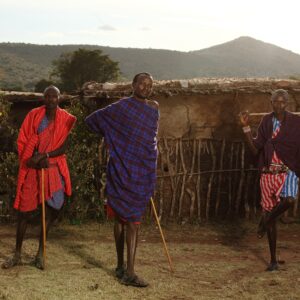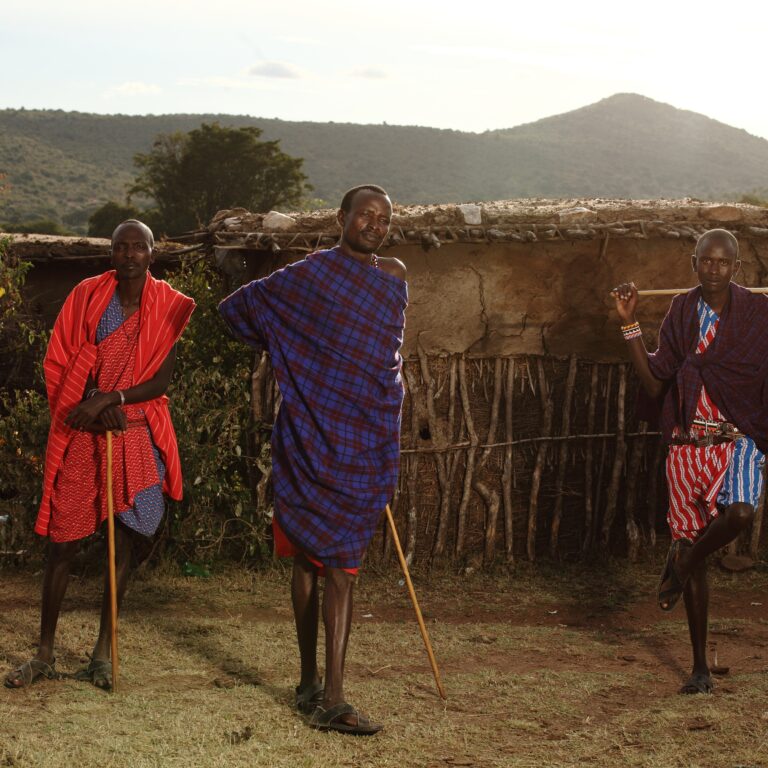The Great Wildebeest Migration in Tanzania is not just an event; it’s the pulsating heart of the African wilderness, a mesmerizing dance of life and death that unfolds across the vast plains of the Serengeti. Millions of wildebeest, zebras, and gazelles embark on an epic, year-round journey, driven by instinct and the relentless pursuit of fresh grazing and water. Witnessing this colossal spectacle is the dream of countless travelers, a profound experience that etches itself into the very soul. However, planning a safari to intercept this moving marvel requires meticulous precision, insider knowledge, and a healthy dose of flexibility. Unlike a stationary wildlife park, the migration is a dynamic phenomenon, constantly shifting with the rains and the availability of food. This comprehensive guide will equip you with the essential tips to meticulously plan your Wildebeest Migration safari, ensuring you are in the right place at the right time to capture the magic of nature’s grandest show.
1. Understanding the Great Wildebeest Migration Cycle: Nature’s Relentless Rhythm
The first and most crucial step in planning your safari is to understand that the “migration” is not a single event but a continuous, cyclical movement spanning over 1.5 million wildebeest and hundreds of thousands of zebras and gazelles. Their journey is dictated by the annual rainfall patterns and the resulting availability of fresh pastures across the Serengeti ecosystem, which extends into Kenya’s Maasai Mara. While nature is inherently unpredictable, the general pattern of the migration is remarkably consistent:
December – March: The Calving Season (Southern Serengeti / Ndutu Area)
Location: The vast short-grass plains of the Southern Serengeti, stretching into the Ndutu region of the Ngorongoro Conservation Area, are the primary focus.
Highlights: This is the breeding and calving season, with approximately 8,000 wildebeest calves born daily in February. It’s a time of immense vulnerability and intense predator action, as lions, cheetahs, and hyenas capitalize on the vulnerable newborns. The landscape is lush and green after the short rains.
Photographic Opportunity: Dramatic predator-prey interactions, tender moments between mothers and calves, vast herds stretching to the horizon.
April – May: The Herds on the Move & Mating (Central & Western Serengeti)
Location: As the short-grass plains dry out, the herds begin their arduous journey north and west, pushing through the central Seronera region and into the Western Corridor essential tips for planning your wildebeest migration safari.
Highlights: This period sees the beginning of the long rains. The herds form massive columns, sometimes stretching for miles, as they search for new pastures. May is often the peak of the wildebeest rut (mating season), leading to dramatic displays of male wildebeest competing for females.
Photographic Opportunity: Capturing the scale of the moving columns, dramatic skies during the long rains, and male wildebeest “rutting” battles.
June – July: The Grumeti River Crossings (Western Serengeti / Grumeti River)
Location: The migration pushes further into the Western Corridor of the Serengeti, where they encounter their first major obstacle: the Grumeti River.
Highlights: This marks the beginning of the dramatic river crossings. While smaller in scale than the Mara River crossings, they are equally intense, with crocodiles lurking in the murky waters. The timing is unpredictable, heavily dependent on rainfall.
Photographic Opportunity: Crocodiles ambushing wildebeest, chaotic scenes of animals plunging into the water, and dramatic predator action along the riverbanks.
August – October: The Mara River Crossings (Northern Serengeti / Mara River)
Location: The herds continue their northward march into the Northern Serengeti, reaching the formidable Mara River, which forms the border with Kenya’s Maasai Mara essential tips for planning your wildebeest migration safari.
Highlights: This is often considered the most dramatic and iconic phase of the migration. Millions of animals gather, often for days, before plunging into the crocodile-infested waters, facing strong currents and waiting predators. It’s a battle for survival. The herds may cross back and forth multiple times.
Photographic Opportunity: Raw, powerful, and emotional scenes of the crossings, close-up predator encounters, and vast herds queuing at the riverbanks. This is peak season for a reason.
November: The Return South (Central/Eastern Serengeti & Southward Push)
Location: As the short rains begin, the herds start their southward journey from the northern plains, moving through the central and eastern Serengeti to return to the southern short-grass plains.
Highlights: While less concentrated than the crossing periods, the herds can still be impressive, especially in the eastern plains. This is a quieter period, with fewer crowds.
Photographic Opportunity: Lush green landscapes after the rains, scattered herds, a more serene safari experience.
2. Choosing the Right Time & Location for You
With the migration being a year-round event, there’s no single “best” time; it depends entirely on what you wish to witness. Both the Serengeti in Tanzania and the Maasai Mara in Kenya are pivotal locations for witnessing the migration. Research each area to determine where the herds are likely to be during your visit. The northern Serengeti and the Mara River are excellent spots for river crossings, while the Central Serengeti provides opportunities for viewing large herds. Decide whether you want to explore one country or both, as each offers unique perspectives on the migration.
For the Calving Season & Baby Animals: Aim for February to early March in the Southern Serengeti / Ndutu area. This offers high predator activity and the undeniable cuteness of thousands of newborn wildebeest.
For the Mara River Crossings (most iconic): Plan your trip for August to October in the Northern Serengeti. Be prepared for higher prices and more visitors, as this is peak season.
For the Grumeti River Crossings: Target June to July in the Western Serengeti.
For a quieter experience with good overall game viewing, consider the shoulder seasons (April-May or November), although migration sightings will be less predictable. The Central Serengeti (Seronera) offers excellent resident game viewing year-round, making it a good base even outside peak migration movements.
Crucial Caveat: Nature is unpredictable. While these are general patterns, the exact timing and location of the herds depend entirely on rainfall. An experienced safari operator will use real-time information from their guides on the ground to position you best.
3. Selecting Your Safari Style & Accommodation
Your choice of safari style and accommodation significantly impacts your experience and budget. Accommodations can significantly influence your safari experience. Look for lodges or tented camps that provide proximity to migration paths while also offering comfort and amenities. Some camps are mobile and follow the migration, ensuring you’re always in the heart of the action. Ensure your choice includes outings led by skilled guides who know the best spots to observe wildlife and can provide insights into the migration’s dynamics.
Safari Type:
Private Safari: Highly recommended for migration safaris. It offers ultimate flexibility. You can spend as long as you want at a sighting, chase a herd (within park rules), return to camp early if needed, or deviate from the planned route. This comes at a higher cost.
Group Safari: More budget-friendly as costs are shared. However, you’re bound by the group’s schedule and interests, which might limit your flexibility to follow the migration’s movements.
Accommodation Type (Crucial for Migration Access):
Mobile Tented Camps: Highly recommended for following the migration. These camps are designed to move seasonally, setting up close to where the herds are expected to be. They offer an authentic “under canvas” experience, ranging from comfortable to ultra-luxury. They maximize your time with the migration, minimizing daily travel.
Permanent Lodges/Camps: Fixed structures. While they offer excellent comfort and amenities (pools, spas), they are best for viewing resident game. If the migration is far from a permanent lodge, you will spend considerable time driving to reach the herds daily.
Budget Camping: Involves basic dome tents set up in public campsites. Offers the lowest cost but with basic amenities.
Budget Levels:
Budget (Camping): Typically starts around $300-$500 per person per day (shared basis).
Mid-Range (Comfortable Tented Camps/Lodges): Around $500-$1000+ per person per day.
Luxury (High-End Lodges, Exclusive Mobile Camps, Private Concessions): Can range from $1000 to $2000+ per person per day, often including internal flights.
4. Booking Your Wildebeest Migration Safari
Due to the migration’s popularity, securing your spot requires foresight. Since the Great Migration attracts numerous visitors, accommodations can fill up quickly, especially during peak migration periods. To secure your preferred lodge or camp, it’s advisable to book your trip well in advance, typically 6 to 12 months ahead. This not only guarantees your stay but can also enhance your chances of finding deals or customized packages.
Book Well in Advance: For peak migration periods (Mara River crossings, calving season) and preferred mobile camps, it is absolutely crucial to book 9 to 18 months in advance. Last-minute bookings severely limit accommodation choices and may lead to higher prices.
Choosing a Reputable Tour Operator: This is arguably the most critical decision. Your safari’s quality, safety, and success hinge on your operator.
Look for Local Expertise: Choose a company based in Tanzania with real-time knowledge of migration movements and park conditions.
Check Reviews & Ratings: Use independent platforms like TripAdvisor, SafariBookings, and Google Reviews. Look for consistent praise regarding guides, vehicle quality, and organization.
Verify Licensing & Accreditation: Ensure they are registered with the Tanzania Tourist Board (TTB) and members of reputable associations like TATO (Tanzania Association of Tour Operators).
Prioritize Ethical Practices: Ask about their porter welfare policies (look for KPAP partners for Kilimanjaro climbs, which often indicates overall ethical standards) and conservation efforts. Avoid operators that promote unethical behaviors like off-roading in restricted areas or disturbing animals.
Communication & Transparency: A good operator will be responsive, provide detailed itineraries, and be upfront about all costs (including park fees, government taxes, and what’s not included).
Guide Quality: Inquire about their guides’ training, experience, and languages spoken. An excellent guide can make or break your safari.
5. Budgeting for Your Epic Journey
A Wildebeest Migration safari is a significant investment. The Great Migration typically unfolds between late December and early July, with the peak migration occurring from May to July. During this time, wildebeests and zebras traverse the Serengeti in search of fresh grazing pastures. Depending on your interests, choose your travel dates accordingly. Visiting during the peak migration will provide more opportunities to witness dramatic river crossings, but expect larger crowds. Early or late in the season can offer unique experiences and a more intimate atmosphere. Understanding where your money goes is vital for planning.
Major Cost Components:
Park Fees: Set by TANAPA (Tanzania National Parks Authority), these are substantial and charged per person, per day.
Accommodation: This is often the largest variable cost, ranging from basic camping to ultra-luxury lodges.
Vehicle & Guide: Includes the cost of the 4×4 safari vehicle (fuel, maintenance) and your professional guide’s wages.
Meals & Drinks: Most packages include full board (breakfast, lunch, dinner) during the safari.
Internal Flights: If opting for fly-in safaris (highly recommended for efficiency to/from the Serengeti).
Hidden/Additional Costs (Crucial to Budget For):
International Flights: To/from Kilimanjaro International Airport (JRO) or Dar es Salaam (DAR).
Visa Fees: For Tanzania.
Travel Insurance: Mandatory, especially with medical evacuation coverage.
Tips/Gratuities: This is a significant and mandatory expense. Budget generously for your guide, cook, and porters (if applicable). Consult your operator for recommended tipping guidelines (e.g., $20-30/day for guide, $15-20/day for cook, $10-15/day for porters for the group).
Personal Expenses: Souvenirs, alcoholic beverages (if not included), laundry, extra activities (e.g., hot air balloon safari).
Hot Air Balloon Safari: An incredible, but often expensive, add-on (typically $550-$650+ per person).
Tips for Cost Management:
Travel in the Shoulder Season: Fewer crowds and potentially lower prices for flights and lodges.
Join a Group Safari: Splits fixed costs among more people.
Consider a Mix of Accommodation: A few nights in a mobile camp for the migration, then a more permanent lodge for comfort.
Pack Smart: Avoid airline excess baggage fees.
6. Essential Packing & Health Preparations
Being well-prepared physically and with the right gear is vital for an enjoyable safari. When preparing for your safari, remember the essentials: binoculars for optimal wildlife viewing, a good camera with a zoom lens, sunscreen, insect repellent, and appropriate medications. Don’t forget your sense of adventure and enthusiasm for nature, as each moment can hold the potential for incredible memories.
Clothing:
Layers, Layers, Layers: Mornings are chilly, days are hot, evenings cool down.
Neutral Colors: Khaki, olive green, brown, grey (avoid bright colors, white, or camouflage patterns).
Long-sleeved shirts & trousers: For sun protection and mosquito bite prevention (especially at dawn/dusk).
Warm Fleece/Jacket: Essential for early morning game drives.
Rain Jacket/Poncho: Lightweight, especially for the wet season.
Footwear:
Comfortable Closed-Toe Shoes: Sneakers or light hiking boots for game drives and walking around camp.
Sandals/Flip-Flops: For relaxing.
Health:
Consult Your Doctor: At least 4-6 weeks before travel. Discuss malaria prophylaxis (Serengeti is a risk area), routine vaccinations, and any specific health concerns.
Yellow Fever Certificate: May be required depending on your country of origin or transit.
Basic First-Aid Kit: Pain relievers, anti-diarrhea meds, antihistamines, antiseptic wipes, band-aids.
Insect Repellent: With DEET (or an effective alternative).
Sun Protection: High SPF sunscreen, lip balm with SPF, wide-brimmed hat, sunglasses.
Gear:
Binoculars: An absolute must! Your guide will have one, but having your own enhances observation tenfold.
Camera Gear: A DSLR or mirrorless camera with a good telephoto lens (at least 300mm+ or a versatile 100-400mm zoom) is crucial for wildlife. A wide-angle lens for landscapes. Plenty of spare batteries and memory cards. Dust protection for your gear.
Power Bank/Travel Adapter: For charging electronics.
Headlamp/Flashlight: For navigating unfenced camps at night.
Reusable Water Bottle: Many lodges offer purified water refill stations.
Small Daypack: For daily game drive essentials.
7. On Safari: Etiquette & Expectations
Patience & Flexibility: Nature is unpredictable. You might wait for hours for a river crossing that never happens, or you might stumble upon a rare sighting unexpectedly. Embrace the “pole pole” (slowly, slowly) philosophy.
Your Guide is Key: Your professional safari guide is your most valuable asset. They are experts in tracking, animal behavior, and local culture. Listen to them, ask questions, and trust their judgment.
Safety First: Always follow your guide’s instructions. Stay inside the vehicle unless at designated safe areas. Remember, you are in wild animal territory.
Respectful Viewing: Maintain a respectful distance from wildlife tips for Planning Your Wildebeest Migration Safari. Avoid loud noises, sudden movements, or flashing lights that might disturb animals. Minimize talking during sightings.
Embrace the Dust: It’s part of the authentic safari experience!
Limited Connectivity: Many camps, especially mobile ones, have limited or no Wi-Fi. Embrace the digital detox.
8. Combining Your Migration Safari
A Wildebeest Migration safari in the Serengeti often combines beautifully with other Tanzanian highlights. In summary, a wildebeest migration safari can be a life-changing experience if planned with care. From timing and logging accommodations to traveling with knowledgeable guides, attention to detail will heighten your adventure and allow you to fully immerse yourself in one of Earth’s most spectacular natural wonders. Happy travels!
Ngorongoro Crater: Its consistent wildlife density, including rhinos, makes it a perfect complement.
Tarangire National Park is famous for its baobabs and large elephant herds.
Lake Manyara National Park is known for its tree-climbing lions and abundant birdlife.
Zanzibar: A relaxing beach extension to recover from the thrilling safari. You can fly directly from the Serengeti to Zanzibar.
Mount Kilimanjaro: For the ultimate adventure seekers, combining a safari with a Kilimanjaro climb is a popular choice.
9. Common Pitfalls to Avoid
Booking Too Late: Missing out on prime camps and dates.
Choosing a Cheap, Unethical Operator: Compromising safety, service, and local livelihoods tips for Planning Your Wildebeest Migration Safari. Prioritize reputable companies.
Having Unrealistic Expectations: Not every day is a National Geographic documentary. Embrace every sighting, big or small.
Underestimating Costs: Especially tips and additional activities.
Packing Too Much/Wrong Gear: Adhere to luggage limits and wear appropriate clothing.
Ignoring Health Advice: Don’t skip vaccinations or malaria prophylaxis.
18 Things to Know Before Booking a Great Wildebeest Migration Safari
- Understanding the Migration Cycle
- Best Time to Witness the Migration
- Choosing the Right Safari Operator
- Types of Safaris Available
- Essential Packing List
- Health and Safety Precautions
- Wildlife Beyond Wildebeest
- Understanding the Local Culture
- Photography Tips
- Environmental Responsibility
- Travel Insurance
- Visa and Entry Requirements
- Currency and Payments
- Accommodation Options
- Booking Flights
- Ground Transportation
- Language and Communication
- Preparing for Weather Conditions
10. Respect Wildlife and Local Communities:
Responsible tourism is crucial when participating in a Wildebeest Migration Safari. Respect the natural environment and wildlife by maintaining a safe distance and adhering to ethical guidelines. Additionally, engage with local communities in a respectful and culturally sensitive manner, contributing positively to the regions you visit tips for Planning Your Wildebeest Migration Safari. The Great Migration typically unfolds between late December and early July, with the peak migration occurring from May to July. During this time, wildebeests and zebras traverse the Serengeti in search of fresh grazing pastures. Depending on your interests, choose your travel dates accordingly. Visiting during the peak migration will provide more opportunities to witness dramatic river crossings, but expect larger crowds. Early or late in the season can offer unique experiences and a more intimate atmosphere.
11. Capture Moments, but Live in Them Too:
While capturing photos and videos is an essential part of any safari, it’s important to strike a balance. Don’t spend the entire time behind the lens—take moments to soak in the incredible surroundings and appreciate the sheer beauty of the Wildebeest Migration. Create memories not just through images but also through the experiences you live tips for Planning Your Wildebeest Migration Safari. Guided tours offer an exhilarating wealth of knowledge about the wildlife and ecosystem that you might miss when exploring on your own. Experienced guides understand animal behavior and migration patterns, which can enrich your experience. They can also ensure your safety and help you navigate challenging terrains.
Tips for Planning Your Wildebeest Migration Safari: FAQs
When is the best time to see the Great Wildebeest Migration? There isn’t a single “best” time, as the migration is a continuous, year-round cycle. The ideal time depends on what specific event you want to witness: Calving Season (newborns & high predator action): February to early March in the Southern Serengeti/Ndutu area. Mara River Crossings (most dramatic): August to October in the Northern Serengeti/Mara River area. Grumeti River Crossings: June to July in the Western Serengeti. Large Moving Columns: April-May (heading west/north) and November (heading south).
How far in advance should I book my migration safari?
It is crucial to book 9 to 18 months in advance, especially if you plan to visit during peak migration periods (Mara River crossings, calving season) or wish to stay in specific mobile tented camps. Last-minute bookings severely limit your options.
What kind of safari accommodation is best for the migration?
Mobile tented camps are highly recommended as they move seasonally to stay close to the herds, maximizing your time with the migration and minimizing daily travel. Permanent lodges are also available, but they require more daily driving if the migration is far from their fixed location.
How long should my migration safari be?
A safari duration of 5 to 8 days within the Serengeti is generally recommended to maximize your chances of witnessing significant migration events and to allow for flexibility in tracking the herds. As of late October, the migration is heading south from the northern Serengeti (Kogatende and Lamai) towards the central and southern areas, with herds being spotted in the Lobo, Mbuze Mawe, and Seronera Valley regions. This southward movement is a rapid return to find fresh grazing, as the short rains are beginning to start.
How unpredictable is the migration?
Can I guarantee seeing a river crossing? Nature is unpredictable. While the general migration pattern is consistent, the exact timing and location of the herds depend on rainfall patterns and fresh grazing, which can vary year to year. River crossings are particularly unpredictable; herds can gather for days before crossing, or cross rapidly and unexpectedly. An experienced guide will use real-time information to position you best, but sightings cannot be guaranteed.
Is a private safari vehicle necessary, or can I join a group?
A private safari vehicle is highly recommended for migration safaris. It provides ultimate flexibility to follow the herds, stay longer at sightings, and adjust your schedule based on wildlife movements. Group safaris are more budget-friendly but offer less flexibility.
How much does a Wildebeest Migration safari cost?
The cost varies greatly based on the safari’s length, level of luxury, and activities. Budget (camping): Typically starts around $300-$500+ per person per day. Mid-Range (comfortable tented camps/lodges): Around $500-$1000+ per person per day. Luxury (high-end lodges, exclusive mobile camps): Can range from $1000 to $2000+ per person per day, often including internal flights.
What are the ‘hidden’ or additional costs I should budget for?
Beyond the package price, budget for: International flights and visa fees. Comprehensive travel insurance (including medical evacuation). Tips/Gratuities for your guide, cook, and porters (a significant and mandatory expense). Personal expenses (souvenirs, alcoholic beverages if not included). Optional activities like a hot air balloon safari (typically $550-$650+ per person).
What kind of clothing should I pack for a migration safari?
Pack layers in neutral colors (khaki, olive green, brown). Include long-sleeved shirts and trousers for sun protection and mosquito bites, a warm fleece or jacket for chilly mornings and evenings, and a lightweight rain jacket (especially during the wet season).
Do I need malaria medication for the Serengeti?
Yes, the Serengeti National Park is a malaria risk zone. It is highly recommended to consult your doctor or a travel clinic for advice on malaria prophylaxis (anti-malarial medication) and to practice strict mosquito bite prevention (repellent, covering up). Witness the awe-inspiring spectacle of Africa’s Great Migration with this itinerary, focusing on immersive wildlife encounters in the Serengeti and surrounding areas, complemented by a cultural exploration in Arusha.
What essential gear should I bring for wildlife viewing?
Binoculars are an absolute must. Also, a good camera with a telephoto lens (at least 300mm+ or a versatile 100-400mm zoom), plenty of spare batteries, and high-capacity memory cards. To plan a wildebeest migration safari, book early, especially for peak seasons like June to October. Choose a reputable tour operator, carefully time your visit for the best wildlife viewing, and stay at least four days to increase your chances of seeing major events like river crossings. Pack smart with layers of neutral-colored clothing, binoculars, and a camera, but don’t forget health essentials like anti-malarial pills and travel insurance. Finally, diversify your safari experience with extra activities like nature walks or hot air balloon rides, and travel responsibly by choosing eco-certified camps.
Can I combine my migration safari with other destinations?
Absolutely! Most migration safaris are combined with other Northern Circuit parks like Ngorongoro Crater, Tarangire, and Lake Manyara. A beach extension to Zanzibar, with direct flights from the Serengeti, is also a very popular combination.
Complete Guide to a Wildebeest Migration Safari
Experience the awe-inspiring complete Guide to a wildebeest migration Safari on a safari through Kenya and Tanzania’s Serengeti and Masai Mara. Witness over 1.5 million wildebeests, zebras, and gazelles as they trek across vast plains in search of fresh grazing. This spectacular natural event offers unforgettable wildlife encounters, including predator-prey action, river crossings, and breathtaking landscapes. Perfect for adventure seekers and wildlife enthusiasts, the migration promises a once-in-a-lifetime adventure.
Conclusion: Your Unforgettable Migration Story Awaits
Planning a Wildebeest Migration safari is a complex undertaking, but with careful research, a reputable tour operator, and a spirit of adventure, you are set for one of the most profound travel experiences on Earth. It’s a journey into the raw, untamed heart of Africa, a testament to the power of nature, and an adventure that will leave you with a lifetime of awe-inspiring memories. Begin your planning early, embrace the unpredictable, and prepare to be utterly captivated by the greatest show on Earth.








